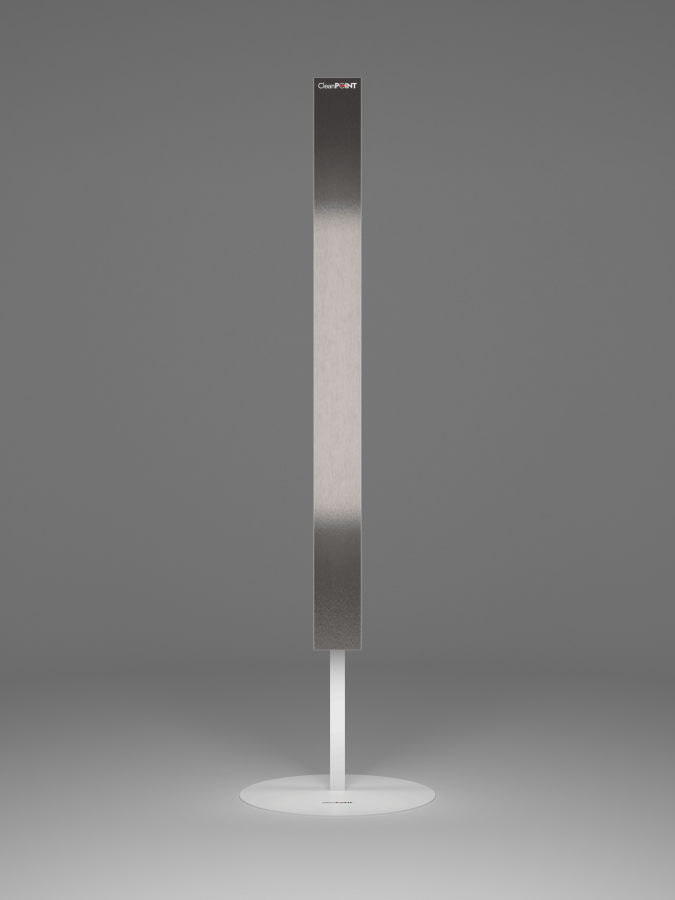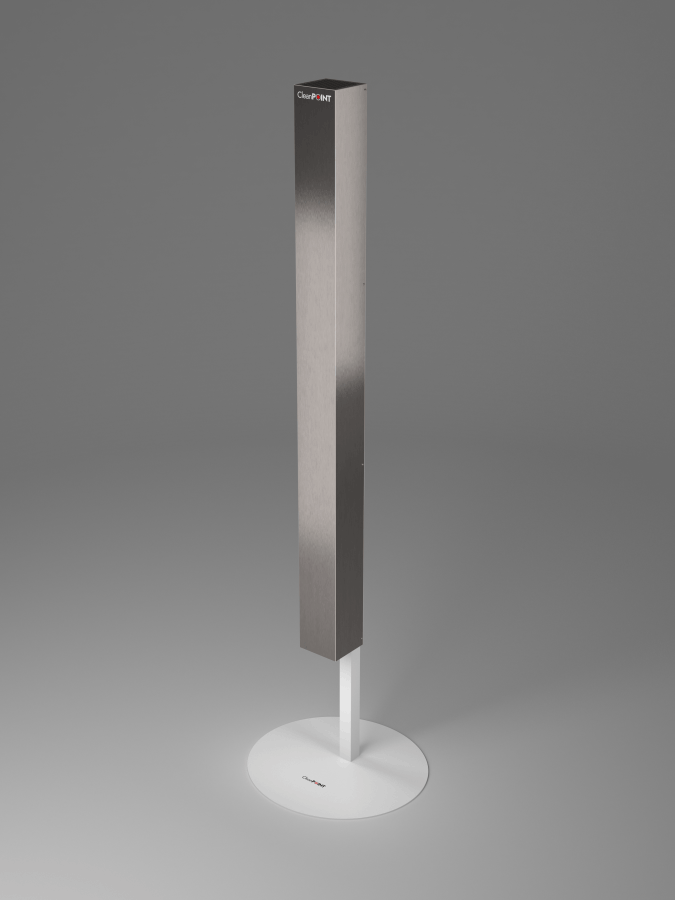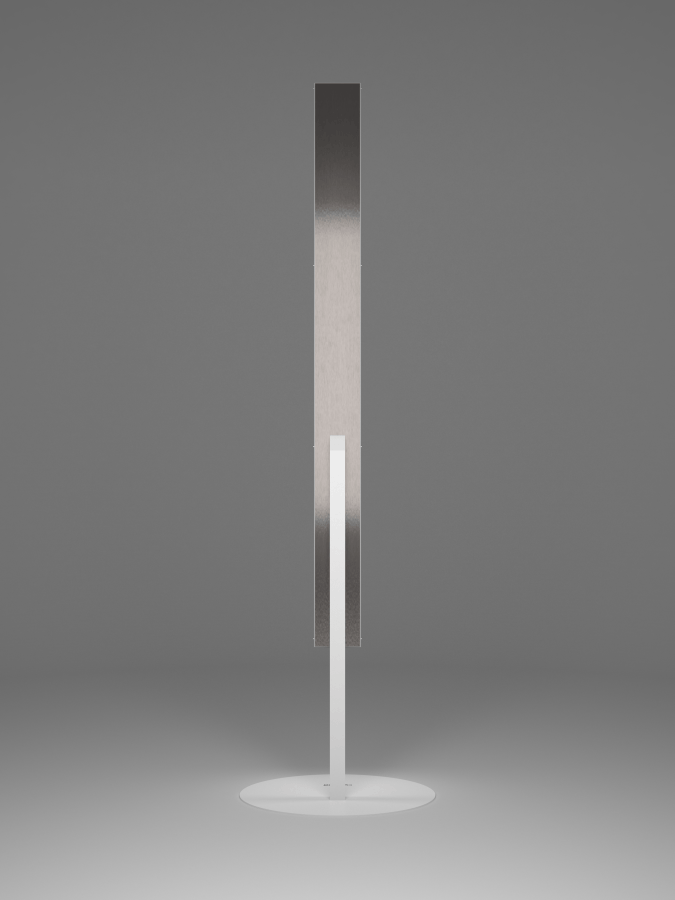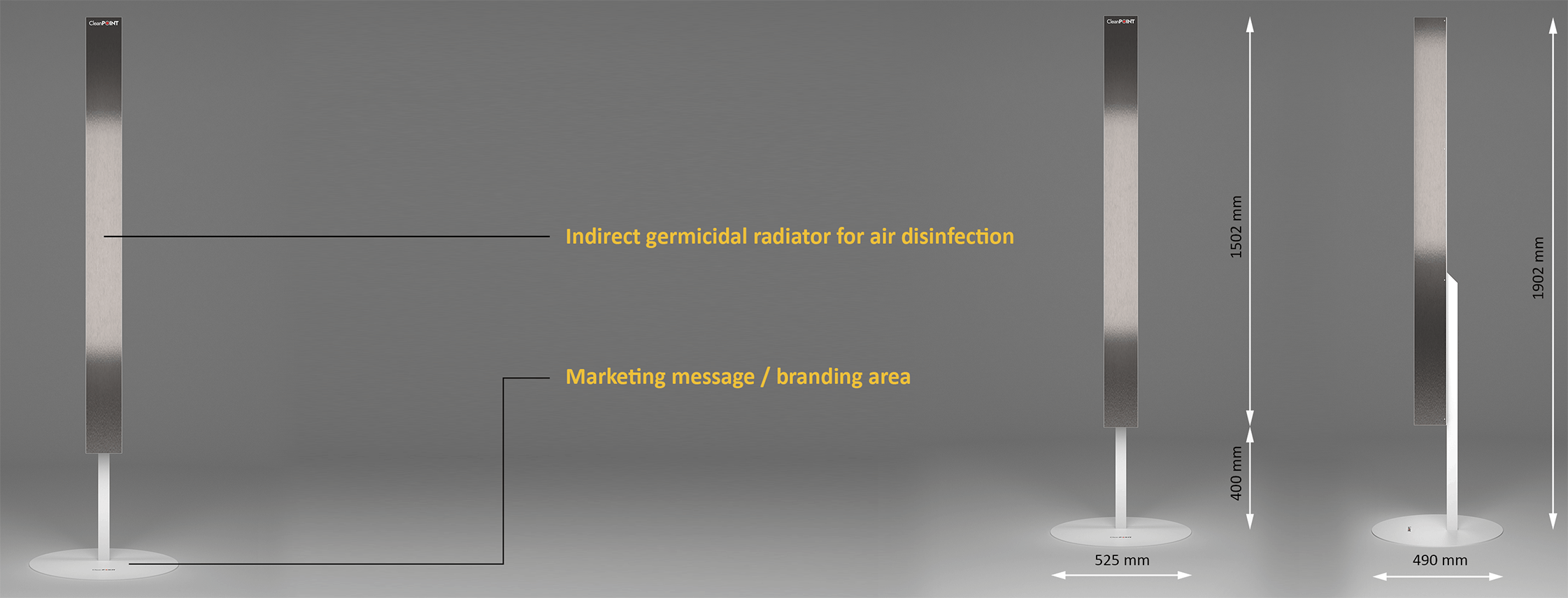






UV radiation can be divided according to biological effects into three groups:
• long-wave UV-A radiation (315–400 nm) - usually does not cause either acute reddening of the skin or burning,
• medium-wave UV-B radiation (280–315 nm) - usually causes acute and chronic skin damage,
• shortwave UV-C radiation (280–100 nm) - is absorbed by the ozone layer and does not fall on the earth's surface.
UV-C radiation is used to disinfect air, liquids and the surface of objects.

How does UV-C work?
The cell nucleus of microorganisms (bacteria and viruses) contains thymine, a chemical element of DNA/RNA. This element absorbs UV-C radiation
at a specific wavelength of 253.7 nm and changes to such an extent (formation of thymine dimers) that the cell is no longer able to multiply and survive.
Is UV-C safe?
UV-C harms not only bacteria and viruses, but all living organisms, including plants and animals. Eye damage may occur in humans or skin.
However, our equipment has been designed with maximum safety in mind. Direct radiators have several safety features, such as delayed start, motion sensors
or audible traffic signals. However, excessive exposure to UV-C radiation can lead to it to temporary conjunctival irritation (photojunctivitis) and skin irritation (erythema), which disappears within 24 to 48 hours without permanent biological damage.
Are the devices effective against COVID-19?
Yes, thanks to their unrivaled performance, they are effective against all viruses, bacteria and fungi, including COVID-19, for which it was primarily designed.
Where can the device be used?
In all indoor areas, regardless of whether they are air conditioned or not. COVID-19 is a respiratory infectious virus that spreads primarily through droplets. Continuous air disinfection is a solution that helps to rid these droplets of viruses and thus reduce the risk of transmission.
